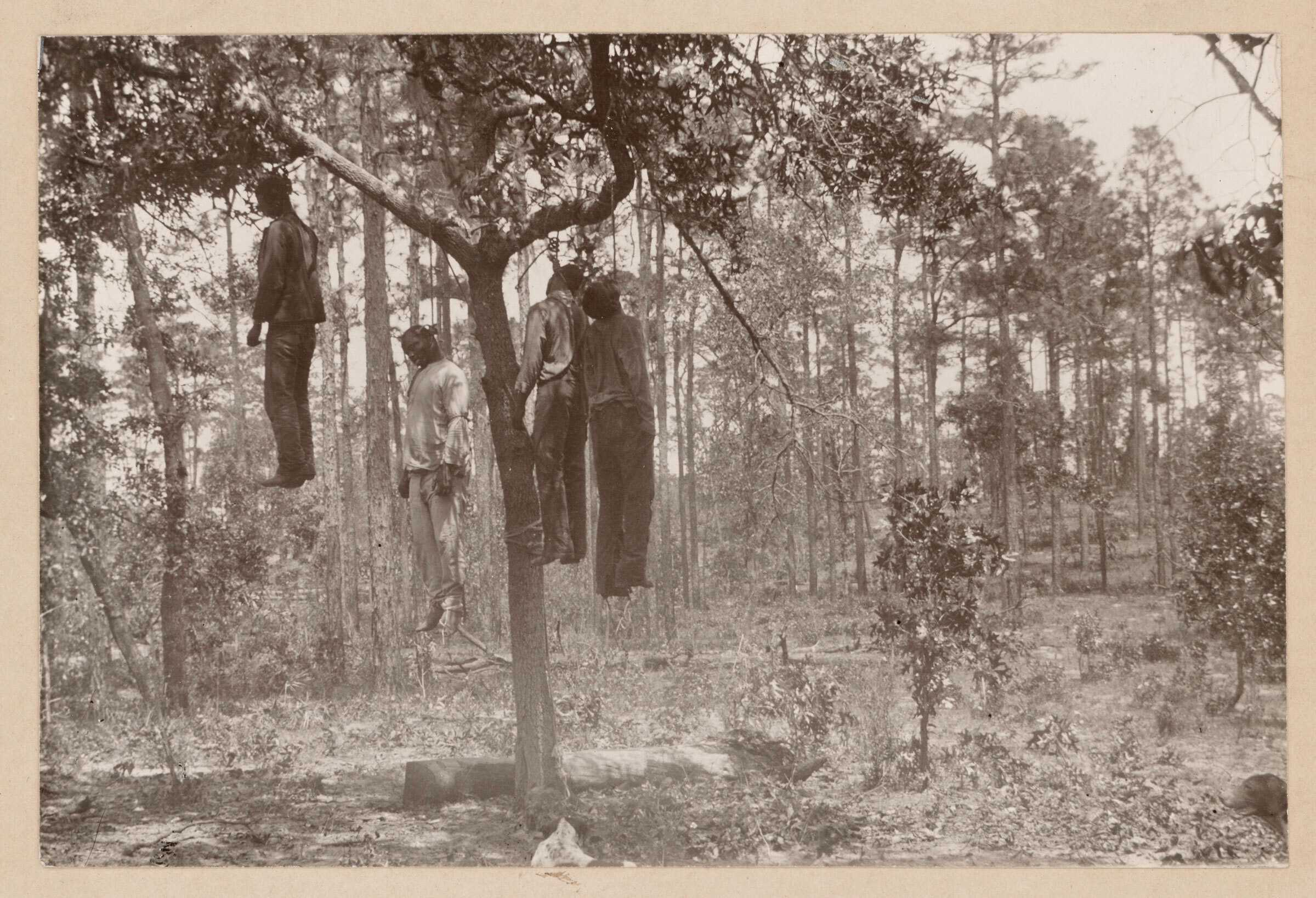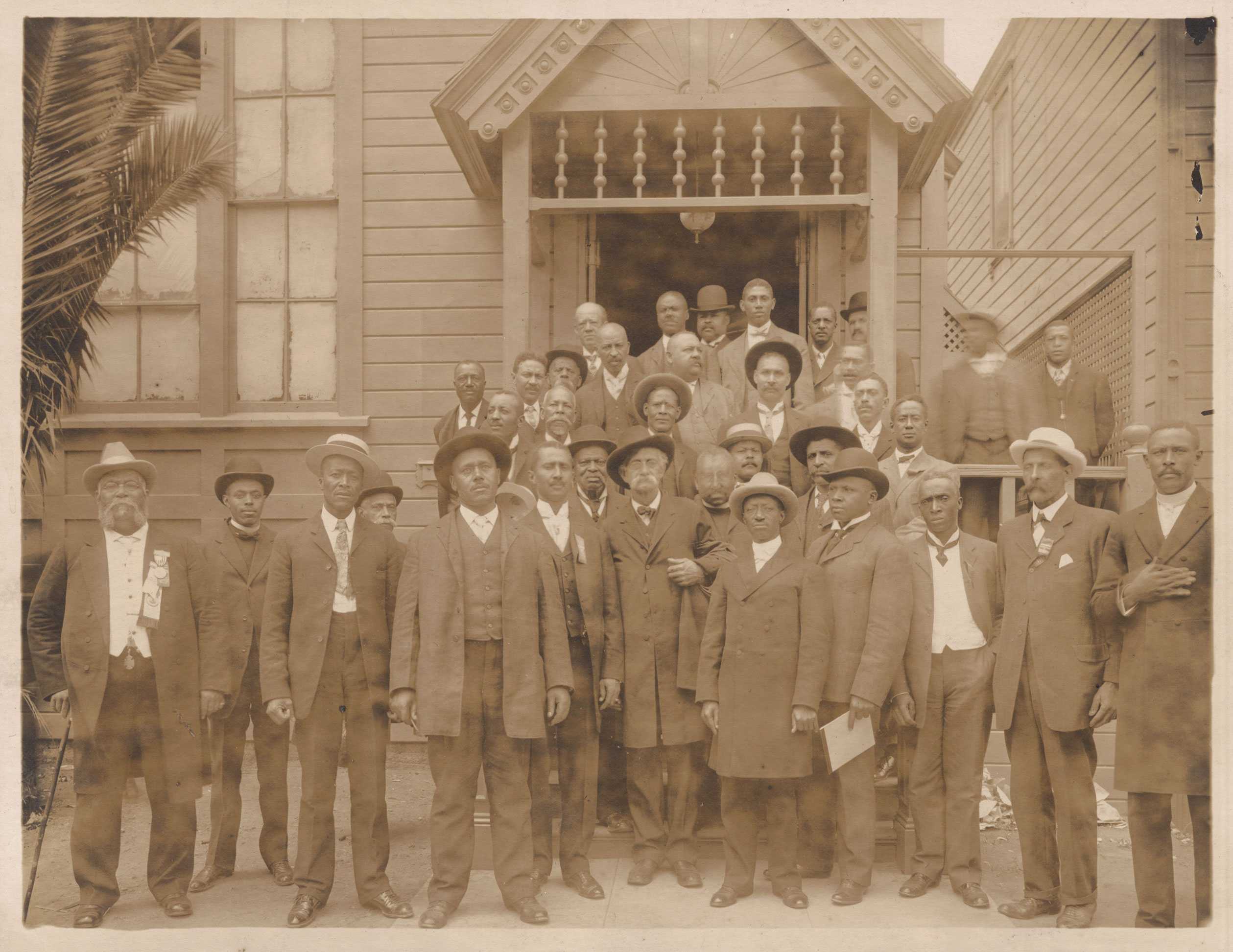
Chapter 2
Creating Jim Crow
Jim Crow laws created the legal separation between white and Black America. Built on Black Codes from the 1800s, the laws dictated where African Americans could go to school, sit on trains, eat in restaurants, drink at water fountains, and use library books. In order to justify segregation, negative stereotypes of African Americans filled the media, advertisements, and even household products. Individual, community, and state-sponsored violence was used to enforce Jim Crow laws. Jim Crow laws remained in effect until the passage of the 1964 Civil Rights Act.
Creating a Climate of Fear in the South
“Nine Blacks Lynched at Hemphill, Texas”
Benjamin Mays
Maintaining segregation required violence, fear, and intimidation. Physical violence, economic threats, psychological intimidation, and sexual exploitation were all used to control African Americans.
The threat of violence overshadowed daily life for African Americans in the South. At age five, Benjamin Mays, the future president of Morehouse College, watched in fear as a group of white men on horseback forced his father to remove his hat and bow to them—at gunpoint. It was a moment Mays never forgot, reminding him of the fear and terror of life in the South.

Related Exhibition
Sensitive Content
The following sections include imagery and descriptions of violence, murder, and people who have been lynched.

Lynching as a Terrorizing Tool
Sensitive Content
The image includes graphic and violent imagery.

Four men lynched in Kentucky, 1908
After Reconstruction ended and federal troops left the South, lynching was used to terrorize African Americans. Victims were shot, hung, tortured, and burned at the stake. Most lynching victims were never put on trial, especially if the accusation was raping a white woman. As part of a broader campaign of harassment and control, lynchings were often attended by families and community members.
Ida B. Wells Investigates Lynching
Southern Horrors: Lynch Law in All Its Phases by Ida B. Wells
A Red Record by Ida B. Wells
Ida B. Wells was born enslaved in Mississippi in 1862 and later moved to Memphis, Tennessee. After a friend, a local grocer, was lynched, Wells investigated the causes of lynching throughout the South. She discovered that mobs often accused their victims of rape but that lynchings actually occurred for a variety of reasons, most often as retribution against Black people’s economic success.
Initially, Wells published her investigation’s results in the newspaper she co-owned and edited, The Memphis Free Speech. She subsequently wrote two pamphlets: A Red Record: Lynchings in the United States and Southern Horrors: Lynch Law in All Its Phases, the latter of which catalogued over 200 lynchings. Throughout her career as an activist, Wells continued to investigate and document lynchings across the country.

The lynching record … presents three salient facts: First, lynching is color-line murder. Second, crimes against women is the excuse, not the cause. Third, it is a national crime and requires a national remedy.
Ida B. Wells, 1909
Ida B. Wells’s Anti-Lynching Campaign
Ida B. Wells, by photographer Mary Garrity, ca. 1893
Forced to leave Memphis because of her anti-lynching efforts, Ida B. Wells spoke against lynching throughout the world and urged Congress to pass an anti-lynching bill. She campaigned for a law to ban lynching and in 1898 met with President William McKinley. Wells continued to advocate for anti-lynching legislation during the next five presidential administrations and also advocated for civil rights and women’s suffrage.

The Rise of the Ku Klux Klan
North Carolina Klansmen dressed in their costumes, 1870
Klansmen covered their faces to avoid identification.
In 1865, six Confederate veterans organized the Ku Klux Klan (KKK) in Pulaski, Tennessee. Intent on re-establishing white dominance in the South, the Klan soon had chapters throughout the region. Klansmen used violence as a tool to prevent African Americans from voting, running for office, or having economic success. The KKK also threatened Republican politicians, helping white Democrats return to power and undermining African Americans’ political influence.
The National Afro-American Council
National Afro-American Council Annual Meeting, Oakland, California, 1907
In 1898, the National Afro-American Council met in Rochester, New York. It was one of the first African American organizations to include both men and women. The council was formed in part to protest the murder of Black postmaster Frazier B. Baker by a white mob in South Carolina. Its members met with President William McKinley to lobby for an anti-lynching law and raise funds to fight laws preventing African Americans from voting.
